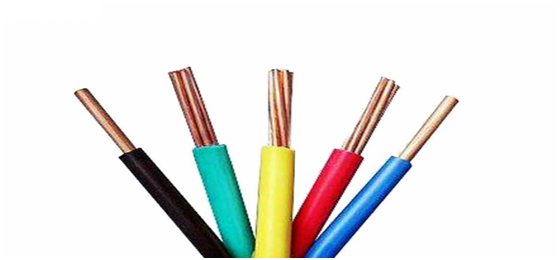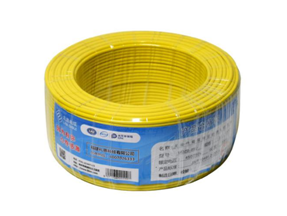At present, the light source of tunnel illumination mainly includes high-pressure sodium lamps, fluorescent lamps, metal halide lamps and the like. Among them, high-pressure sodium has high light efficiency, less ultraviolet radiation, can be ignited at any position, is shock-resistant, and has a long service life. It is widely used in tunnels, especially in tunnels outside cities such as mountains, and fluorescent lamps and metal halide lamps have been used in urban tunnels in recent years. A large number of applications have also been obtained in lighting. LED is a light source that has developed rapidly in recent years. Its performance indicators such as light efficiency are rapidly increasing and the price is rapidly decreasing. Therefore, in the successful application of display and landscape lighting, it has gradually been applied in directional lighting such as road lighting.
LED overall light efficiency advantage is obvious
In addition to the light efficiency of the LEDs used, the overall efficiency of the LED tunnel light is also related to three factors: the utilization of light energy achieved by the secondary optical design, good heat dissipation to ensure the maintenance performance of the LED output light flux and the efficiency of the LED drive circuit. . The efficiency of the above several parts is the overall luminous efficacy of the LED tunnel light.
Through the research on the LED light-emitting mechanism, it can be inferred that the radiation spectrum efficiency of the LED can reach 3501m/W. Since the LED light-emitting mechanism is a cold light source and the spectrum in the radiation is all in the visible light range, the actual efficiency is expected to be closer to the theoretical value. Even considering the limitations of the process, the actual LED efficacy is half the theoretical value. The improvement of light efficiency means the improvement of energy utilization efficiency. When the LED production process is matured, the energy-saving advantages of LED will be highlighted in comparison with the traditional tunnel illumination source.
Secondly, compared with traditional light sources, LEDs are small in size and can even be treated as point sources in many applications, which gives the luminaires a great deal of flexibility in their optical design. At the same time, in the conventional light source luminaire, the light source occlusion and absorption due to the large size of the light source does not exist in the LED luminaire.
Finally, the LED only emits light into the half space, which means that without any form of reflector, the light from the light source can also be directed to the illuminated surface. This feature determines that the LED lamp is expected to achieve more than 90% of the efficiency of the lamp. At the same time, a high optical throughput can be achieved through reasonable optical design.
The above is the possible advantages of LED for tunnel lighting in terms of overall light efficiency, but how to turn its advantages into practical application products still needs to solve many technical problems. The LED is a light source that is quite different from a conventional light source such as a high-pressure sodium lamp. For tunnel illumination, it is not possible to simply replace the existing light source with an LED, nor can it simply illuminate the LED for tunnel illumination. How to integrate the various components of the LED tunnel luminaire to achieve the maximum utilization of the luminous flux of the light source, thereby maximizing the energy saving of the lighting is a challenge we face.
Tunnel lighting life
Due to the 24-hour lighting of the tunnel, 8760 hours a year, the continuous lighting for 4 years is about 35,000 hours. Due to the cumbersome replacement of the luminaires in the tunnel, the life of the tunnel luminaires is very high.
The main factors affecting the life of the luminaire are the light source and the ballast (LED is the driver), and the life of the lamp and glass is very long. Conventional light sources include fluorescent lamps, metal halide lamps, and high-pressure sodium lamps. The life of the lamps is shorter than that of the ballasts. Therefore, the replacement of the lamps (bulbs) often extends the overall life of the lamps. In LED luminaires, the theoretical life of LED devices is very long, and its inference life exceeds 30,000 hours. Therefore, the life of LED drivers has become a bottleneck affecting the overall life.
In the traditional light source, the electrodeless fluorescent lamp is a variant of the fluorescent lamp and has a long service life. It is generally considered to be more than 50,000 hours, but its lighting is a high-frequency alternating current signal, and the corresponding ballast technology is complicated, so its life span is the main bottleneck.
Market application of LED tunnel lights
From the perspective of the development of the LED market and the continuous improvement of production technology, the current problem of restricting the price of LED as an illumination source will be gradually solved, and the application of LED in various lighting will be gradually popularized and deepened. According to industry analysis, the price decline of LEDs is down by half every 24 months. Therefore, with the rapid decline of LED prices, compared with traditional light sources, the advantages of LEDs make the lamps more efficient, easy to use, environmentally friendly, and long life, especially in directional lighting, including tunnel lighting. The field will be quickly promoted.
At present, LEDs are mostly used in mountain road tunnels. The application effects are different, and there are still many problems in the application, such as high light decay, high junction temperature, unreasonable lamp structure, poor illumination uniformity, driving power supply life, and uneven quality. Therefore, when designing tunnel LED lighting applications, It is necessary to strengthen system research and gradually form technical standards to ensure the feasibility of LED application in tunnel engineering.

Low smoke zero halogen flame retardant wire refers to cable that does not contain halogen(F, Cl, Br, At). Its jacket is made up of some very special materials which are non-halogenated and flame retardant, emitting limited smoke and no halogen when exposed to high sources of heat. It can have various levels of flame retardancy and mechanical strength. The flame retardant performance of the cable is superior, very little smoke during burning, no corrosive gas escape, thereby protecting public health and avoiding any possible damage to electronic equipment. For this reason, its use is highly recommended for public places and for all installations where it is necessary avoid to electric interference of nearby circuits.

Advantages:
- Large tensile strength
- Good weatherability
- Non moving performance
- Good softness
- No toxic smoke during burning
- Excellent elasticity and stickiness
- Great resistance
- Easy installation
- Long life span


Rated Voltage:
450/750V
Application:
Wiring in all installations where fire safety is of utmost importance like schools, theaters, commercial complexes, apartments, high rise buildings, laboratories, etc.
Welcome to visit our factory to learn more about us. If you have any questions, please feel free to contact us.
LSZH Flame Retardant Wire,Flame Retardant Electric Wire,Fire Retardant Cable,LSZH Sheath Flame Retardant
Fujian Lien Technology Co.,Ltd , http://www.liencable.com